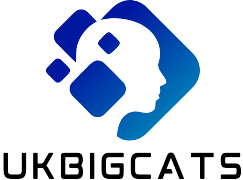In a world where robots are brewing coffee and AI is writing poetry, the rise of the AI workforce is nothing short of a sci-fi movie come to life. Companies are trading in their traditional employees for algorithms that can crunch numbers faster than you can say “machine learning.” But don’t worry, your job isn’t about to be replaced by a chatbot just yet—unless you’re in customer service, of course.
As artificial intelligence continues to evolve, it’s reshaping the workplace in ways that are both exciting and a tad unnerving. From automating mundane tasks to enhancing decision-making processes, the AI workforce is here to stay. So, whether you’re a tech enthusiast or a curious onlooker, it’s time to dive into the fascinating world of AI and discover how it’s transforming the way we work, one algorithm at a time.
Table of Contents
ToggleUnderstanding the AI Workforce
The AI workforce represents the integration of artificial intelligence systems into various job sectors. This integration encompasses software, robots, and algorithms designed to perform tasks usually handled by humans.
Definition of AI Workforce
An AI workforce involves intelligent systems performing roles that include decision-making, data processing, and customer interactions. These systems enhance activities by automating repetitive tasks and providing insights that drive business efficiency. Companies leverage this technology to streamline operations and improve service delivery across multiple industries, including finance, healthcare, and manufacturing.
Evolution of AI in the Workforce
The evolution of AI within the workforce traces back several decades, starting from simple algorithms to advanced machine learning capabilities. Initially, AI focused on automating straightforward tasks, but advancements in deep learning and natural language processing expanded capabilities significantly. Presently, AI systems handle complex analyses, manage logistics, and interact with customers through chatbots. Adoption rates across industries have surged, showing an upward trend in workforce transformation. Data from various studies indicates that over 70% of organizations use AI tools to enhance productivity and performance.
Benefits of an AI Workforce

An AI workforce offers significant advantages across various sectors. Companies leverage this technology to drive significant improvements in operations and performance.
Increased Efficiency
Enhanced efficiency stands out as a primary benefit. AI processes tasks with speed beyond human capabilities. Automating repetitive duties allows teams to focus on strategic activities. With AI handling data analysis, organizations reduce the time spent on manual processing. Studies show that businesses employing AI experience productivity increases of up to 40%. Consider the impact in customer service where AI chatbots offer immediate assistance, cutting down wait times dramatically. Implementing AI tools leads to streamlined workflows and improved output.
Enhanced Decision-Making
Better decision-making results from integrating AI into workplace processes. AI systems analyze vast amounts of data quickly, uncovering trends human analysts might miss. Organizations harness these insights to guide strategic initiatives, enhancing their competitive edge. Machine learning models help predict market shifts, influencing product development decisions. For example, financial institutions use AI to identify investment opportunities based on real-time data analysis. Implementing AI fosters more informed decisions that align with business objectives. This capability empowers companies to remain agile in an ever-changing market.
Challenges of Implementing an AI Workforce
Implementing an AI workforce introduces significant challenges that organizations must navigate.
Job Displacement Concerns
Job displacement remains a top concern with the rise of AI. With over 70% of organizations using AI, many employees fear losing their positions to automation. Industries like manufacturing and customer service might see the most direct impact, where repetitive tasks get automated. Research shows that businesses adopting AI can achieve productivity increases of up to 40%, but these gains often come with workforce reductions. Employees at risk may face increased anxiety, resulting in decreased morale. Businesses must address these concerns through workforce retraining initiatives. Fostering a culture embracing lifelong learning becomes essential to mitigate fears and prepare employees for new roles.
Ethical Implications
Ethical implications also arise from AI workforce integration. Organizations face dilemmas regarding decision-making transparency and accountability. AI systems can reflect biases present in training data, affecting fairness in outcomes. Effective measures must get implemented to minimize these biases while ensuring AI applications are ethical and inclusive. Moreover, concerns about data privacy surface, highlighting the need for robust data protection policies. Trust is vital in adopting AI solutions. Stakeholders must prioritize ethical practices to foster confidence among customers and employees alike while navigating potential pitfalls associated with AI technologies.
Future of the AI Workforce
The future of the AI workforce promises significant changes across various sectors. Organizations anticipate shifts driven by technological advancements, particularly in the areas of productivity and automation.
Predictions and Trends
Predictions indicate that by 2025, AI will contribute up to $15.7 trillion to the global economy. Trends show a growing reliance on AI in finance, healthcare, and marketing, as companies integrate intelligent systems to improve efficiency. Emerging technologies like natural language processing and machine learning are expected to advance, enhancing AI’s capabilities in decision-making and data analysis. Additionally, the workforce will see a rise in collaborations between AI systems and human workers, creating hybrid teams that leverage both skills. As a result, industries will adapt, focusing on developing specialized roles that complement AI functions.
Reskilling and Workforce Adaptation
Reskilling initiatives will become essential as businesses adjust to an AI-dominated landscape. Companies must prioritize employee training to help workers transition into new roles. Collaborative training programs and partnerships with educational institutions can facilitate this process. Employees in industries such as manufacturing and customer service may need to develop skills in areas like data analysis and AI management. Adaptation strategies should also include fostering a culture of continuous learning to encourage personal development. Embracing these changes will enable organizations to remain competitive while supporting their workforce in navigating the evolving job market.
Conclusion
The integration of AI into the workforce is reshaping industries and redefining job roles. As businesses increasingly adopt AI technologies to enhance efficiency and decision-making, they must also navigate the accompanying challenges. Addressing job displacement concerns and promoting ethical practices are vital for fostering trust among employees and customers alike.
Looking forward, the collaboration between AI and human workers will likely become the norm. Organizations that prioritize reskilling and lifelong learning will not only adapt to these changes but also thrive in an AI-driven economy. Embracing this transformation is crucial for staying competitive while ensuring that the workforce is equipped for the future.



